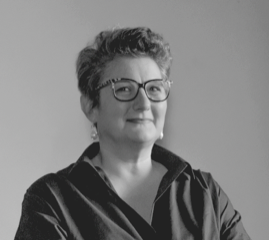Michela Ferraro is a jewelry expert and educator with over 30 years of passion and international experience in the industry. She specializes in luxury, innovation, sustainability, and precious metal additive manufacturing (AM) for the jewelry industry, which she believes are the key drivers for ethical, responsible, and sustainable practices. In this interview, Michela discusses the opportunities and challenges of 3D printing of platinum group metals (PGMs).
Could you please provide a brief overview of the application of 3D printing in the jewelry sector, with a particular emphasis on the use of PGMs?
3D printing has been a game changer in the jewelry industry, but we must differentiate between fast prototyping processes and direct metal printing. The first technology allows even [small-to-medium enterprises] to produce jewelry faster and more efficiently. Based on the fact that the most common and adopted manufacturing technology in the jewelry sector is casting, having models 3D printed in wax or resin directly from a CAD file ensures a more agile approach, compared to handmade prototypes. Direct metal 3D printing has been around for more than a decade now, and despite the increased surface finish quality, this process still encounters difficulties yet to be fully addressed. Surely, metal AM has great potential for PGMs compared to casting, which requires a very specific skills set.
For 3D printing experts or practitioners, which 3D printing method is most suitable for creating jewelry with PGMs?
In Jewelry sector the most common method for precious metal Additive Manufacturing, is based mainly on laser powder bed fusion.
Can you highlight the opportunities and challenges for 3D printing of PGMS in the jewelry sector?
The opportunities are vast, especially considering that the metal AM process has proven to be not just suitable for platinum, but to have great potential as demonstrated by the contest launched by Progold in collaboration with Chaumet and Platinum Guild International. Challenges now primarily pertain to crafting jewelry in platinum, beyond classic jewelry with diamonds, with new and bespoke designs that could only be manufactured with metal AM.
According to the “3D Printing Jewelry Markets 2023: Market Study and Forecast” report from Additive Manufacturing Research (AMR), direct metal 3D printing facilitates the creation of lightweight, intricate platinum jewelry with thinner wall thicknesses (0.30 mm to 0.35 mm) compared to traditional casting, allowing for filigree-style designs. Additionally, metal powder bed fusion technology supports these thin-walled structures and achieves high material density, potentially eliminating the need for Hot Isostatic Pressing (HIP) in some cases, which is often required for investment cast platinum and palladium jewelry.
Marta Bacunni platinum earrings from Giorgio de Chirico works Edges
From a business perspective, do you foresee financial growth or a promising future for the application of PGMs in the jewelry sector?
Platinum has always been the preferred precious metal within a high-end niche. Platinum Guild International directs its focus towards markets such as Japan, China, India, and the US. In its first quarter report for 2023, the over 20% growth in retail business in India is noteworthy, along with the revival of PlatAfrica – a collaboration between PGI India and Anglo American Platinum. In this context, Metal AM holds significant potential, although it necessitates specific analysis and tailor-made strategies to create collections. These collections, with designs that leverage the unique capabilities of this technology, aim to meet the expectations of this niche.
It’s worth noting that, according to the same AMR report, the 3D printing of various colors of golds and platinum have a projected 10-year compound annual growth rate of 18% and an average year-on-year growth rate of 18% from 2023 to 2031. However, platinum is not expected to outpace gold in terms of overall revenues generated for the jewelry 3D printing market.
Lastly, with the advent of AM in the jewelry sector, comparisons have been drawn between technology-driven processes and handmade skills. How can a balance be struck between the introduction of technology and the preservation of handmade craftsmanship in the jewelry culture?
This is a compelling question. Hand-made jewelry production will always find its niche, particularly for customized jewelry and small-scale demand. On the other hand, technology-based processes are more suited to addressing medium to large-scale market demands. The two approaches are not mutually exclusive; rather, it is the choice of the designers that dictates how these methods can be harnessed to fully exploit their specific potentials.
William Sullivan’s pair of Britannia Silver Water Jugs
Michela Ferraro’s experienced viewpoint highlights the connection between traditional craftsmanship and modern technology in the jewelry sector. The interaction of 3D printing and precious metal AM, especially with PGMs, is paving the way for more creativity, efficiency, and ethical practices. As designers and practitioners navigate between the appeal of handmade jewelry and the accuracy of technology-driven processes, the industry is at a point rich with both innovation and tradition. Emerging market trends and collaborations like PlatAfrica indicate a promising direction.
Subscribe to Our Email Newsletter
Stay up-to-date on all the latest news from the 3D printing industry and receive information and offers from third party vendors.
Print Services
Upload your 3D Models and get them printed quickly and efficiently.
You May Also Like
Heating Up: 3D Systems’ Scott Green Discusses 3D Printing’s Potential in the Data Center Industry
The relentless rise of NVIDIA, the steadily increasing pledges of major private and public investments in national infrastructure projects around the world, and the general cultural obsession with AI have...
Formlabs Teams Up with DMG MORI in Japan
In late June, Nick Graham, Chief Revenue Officer at Formlabs, announced on LinkedIn that the company had partnered with DMG MORI, one of the world’s leading machine tool companies, to...
EOS in India: AM’s Rising Star
EOS is doubling down on India. With a growing base of aerospace startups, new government policies, and a massive engineering workforce, India is quickly becoming one of the most important...
3D Printing News Briefs, June 25, 2025: R&D Materials, 3D Printed Veneers, & More
In today’s 3D Printing News Briefs, 3DXTECH has launched a program that gives customers early access to experimental materials, and the first Lithoz CeraFab Multi 2M30 in the Czech Republic...






































